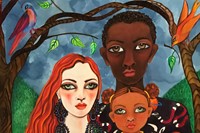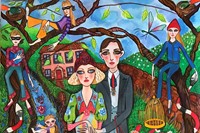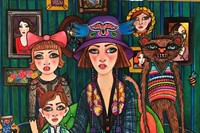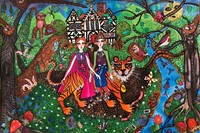We speak to the artist as a new collection of her works goes on display at Art Central Hong Kong
Many will know the atmospheric illustrations of Helen Downie through her moniker, Unskilled Worker. The London-based, self-taught artist rose to prominence when photographer Nick Knight came across her Instagram account in 2014; Knight, who describes Downie’s work as “some of the most intense and poetic painting I have come across” quickly commissioned the artist to create a series of portraits of Alexander McQueen’s most iconic looks for SHOWstudio. Subsequently, Downie’s illustrations were brought to the attention of Gucci’s creative director Alessandro Michele, who collaborated with her on a collection soon afterwards. She was soon well known to art and fashion audiences alike.
Downie’s paintings depict fantastical scenes; she draws references from Tudor and Renaissance imagery, lending a lavishness to her characters so that they both dominate the canvas and appear simultaneously confined within their frames. In the midst of packing for Art Central Hong Kong where she will be represented by Korean gallery Atelier Aki, Downie sits down with AnOther to talk Instagram, Radclyffe Hall and her complex relationship with technology.
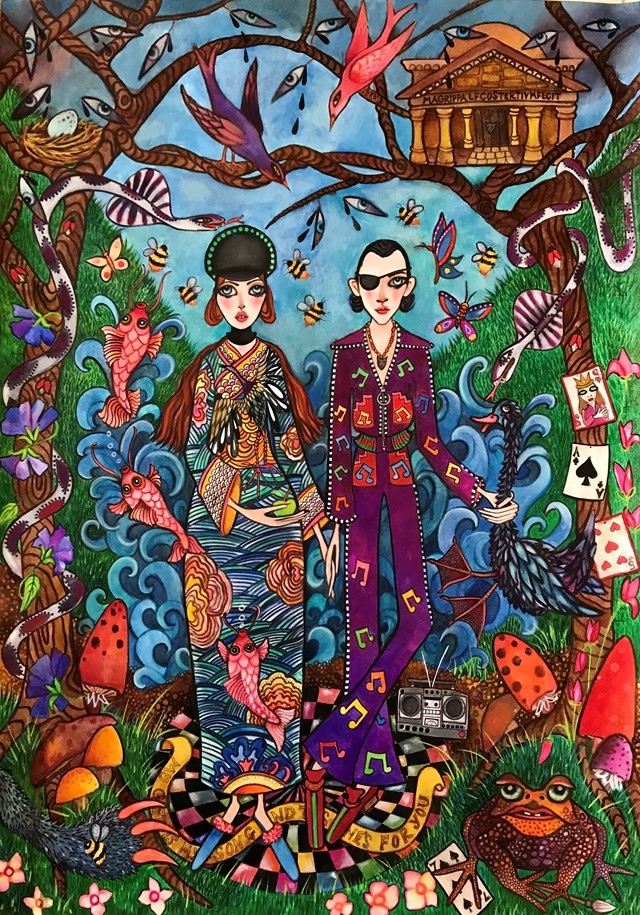
On her artistic process and how she prefers to work…
“My process is an isolated one. I lock myself away for around ten hours of the day. Sometimes I paint over a period of time and will have the same song on loop. I think music is the highest art form; it is a portal into other worlds, which is ultimately what I aim to create through my work – you know, that emotional switch music can turn on? I want my work to create a perfect outcome like that, yet because I know I will never be able to achieve this, it drives me to keep on working.
“My paintings always have layers. I feel like my process is similar to making a tapestry in a strange way. I don't work with sketchbooks and I don't do rough work; instead, everything becomes a finished piece, as I feel a responsibility to bring each and every one of my characters and scenes to life. I can't cover up a mistake. When a mark is on the paper it is permanent, and I have to do my best to work with it. My paintings are not trying to be anything they are not, they are made with honest intent.”
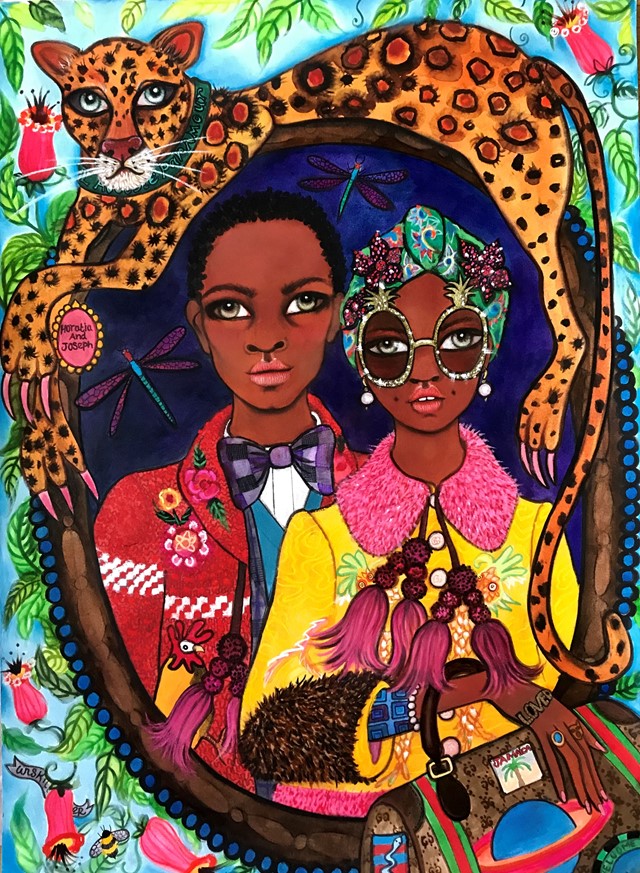
On her complex relationship with technology...
“The importance I place on staying with a work plays with the dual relationship I have with our digital society. This is why there are iPhones, which are often smashed, in a lot of my paintings. Without Instagram I wouldn’t be where I am now – there would be nowhere for my works to go – but on the other hand, Instagram and technology have taken a lot from society. One of the biggest things they have taken is boredom: boredom is such an important state of being. So many things are born from it. It’s scary to think the 25-30s are the last generation of the pre-internet children. I strongly believe the birth of the internet is the biggest change since the industrial revolution. Everything is now available then and there. If I fall in love with Otto Dix, I can look up all of his work and get a general overview of his life in five minutes. You no longer have to walk to the library. And what would you have come up with during that walk to the library?
“I even feel a pressure with my work to make them less detailed, faster. I try my hardest to fight this pressure. All of these themes and topics have somehow woven themselves into my paintings, which takes us back to this idea of my works being similar to a tapestry. I guess I find it hard to talk about my art, which is why I paint – it is how I express myself, and all of these ideas.”
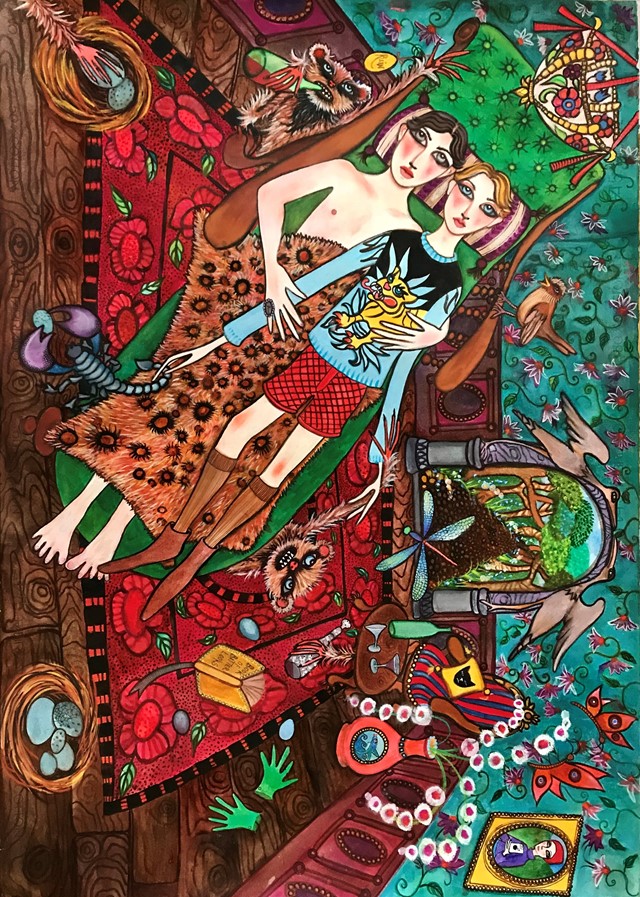
On how she creates her characters…
“There is definitely an element of childhood innocence in my work – but I touch upon an uncertainty that is felt in childhood. That moment you find out nobody is in charge – when you realise your parents are also people, and may not have all the answers. This idea is woven throughout my work and characters, and I think this is why people read my figures as haunting; my characters are there, but at the same time not. In my portraits there are often images of their ancestors on the walls – the figures they wish to emulate.
“I don't see the characters’ stares as vacant – rather, I see my figures as trapped, which is exaggerated though their eyes. It’s as if they know that they are in a painting, trapped within its frame. I suppose this reflects on the confinements we face in society and our own lives, and I think it is also a comment on family dynamics, which can be very difficult. My reactions to humans is more of an emotional one. I think this is why the eyes are so important: they hold within them the essence of the individual. I feel the same goes for animals, their eyes are so similar to humans. The animals in my work have a human quality about them; they are often the ones that hold the wisdom.
“While I often draw from my own imagination to create characters, I also respond to specific events. English Idle 2 was made as a response to the Charlotte riots. It was painted a few days after. I was so angry, hurt and embarrassed. I think you can see that these figures have a strong solemness about them. The Tiger Lost its Stripes draws influence from the autobiographical book The Well of Loneliness by Radclyffe Hall, as I focus on the damaging implications of not having a place in society. I have also included a self-portrait in this work: I paint myself as a superhero, in an ironic way, and I approach the topic of illness and the ways in which we are told to behave by society when diagnosed with a terminal illness. We are told to be brave. You are called a survivor if you live. What if you don't live? Are you not a survivor? I think the way society tells us to be can be hugely damaging to the psyche.”

Unskilled Worker’s paintings are on display with Atelier Aki at Art Central Hong Kong until April 1, 2018.

